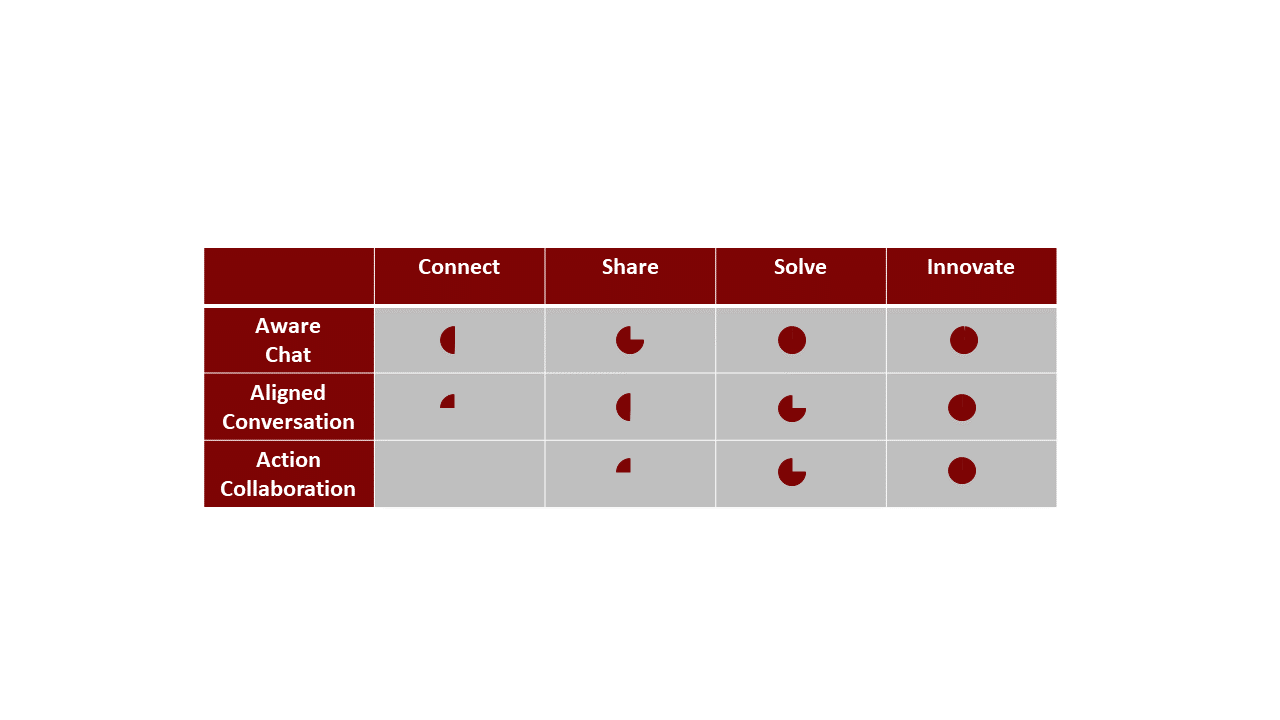As organisations adjust to more flexible ways of working they are rediscovering the need to actively work on fostering a sense of community. Working from home can create new isolation and new silos without the connection that employees created in and around our workplaces. Tools exist to foster community but tools alone are not the answer. Organisations that want to develop the sense of community in their employees need to invest in community managers to facilitate interactions on the platforms that are available.

A Group Is Not A Community
Before we go further, it is important to note that community is not a synonym for team or group or organisation. You can’t just anoint a gathering of humans a community. If you do so, you will still have a collection of humans. Communities need to share something – goals, resources, values, beliefs or a sense of belonging. That sharing is by necessity voluntary. You can’t make people share and people need the ability to opt out. The community needs the ability to ostracise too, whether to remove violators of rules or to set boundaries. You can’t make everyone a community and you needn’t try.
When you bring together groups of humans to bond in meetings, workshops and conferences, you will nominate a facilitator a productive connection and ensure the group works towards the goals of the session. When you bring together a group of employees on a technology platform like Yammer or another community platform, you can’t expect the platform to do the heavy lifting. Technology no more makes a community than pens, projectors, sticky notes, butcher’s paper and whiteboards make workshops.

Facilitating the Human Bits
Facilitators play important roles in human interactions around our work because they play essential roles in helping humans to address the human questions of community:
- Is this place for me and is it safe to be involved?
- Who is here and what can I learn?
- How can I help and how can others help me?
- Where are we going together? What’s next?
We need community management to lead the work that enables humans to go beyond their fears and conservative habits:
- Connect: Making the space, helping make sense of new work & making it safe
- Share: Creating shared context. encouraging participation & sharing towards goals
- Solve: Exploring options and fostering creative problem solving
- Innovate: Pushing boundaries, taking the group further and translating discussion into action

Some groups are small enough to manage the process of managing this evolution themselves. Some groups have leaders who take on the role of facilitator naturally seeing the potential in the team and the technology and helping others to make sense of the opportunity to work together in a richer and more valuable way. Beyond these rare cases, the value of community, particularly in larger groups, needs to be facilitated by professionals dedicated to the task. We ask people to chair our meetings, why wouldn’t you expect a community of employees to be facilitated by community managers?
The context of our work is rapidly changing and we are expecting employees to do more in different ways every day. The human parts of the process around all this demanding change requires continuous sense-making, alignment, creativity and change. Investing in community management will help facilitate employees to find new and better value in their day-to-day work.

















